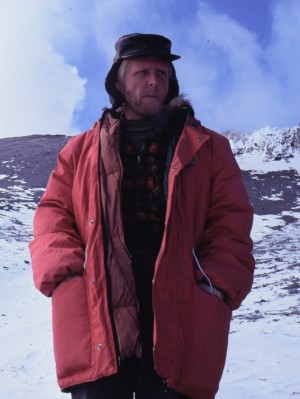2023 Werner F Giggenbach Prize winner:
Raimundo Brahm
Raimundo, whose work was published in the Journal of Petrology, studies the compositions of olivine-hosted glassy melt inclusions selected from tephra erupted from several Japanese volcanoes to assess how the magmas they represent evolved. The findings help to determine the pressure and temperature conditions and H2O concentrations of the primary melts that have a bearing on magma explosivity making a significant scientific contribution.
Past Werner F Giggenbach Prize winners
| Year | Recipient |
| 2022 | Rose Turnbull (GNS Science) |
| 2021 | Terry Isson (University of Waikato) |
| 2020 | Sophie Gangl (University of Otago) |
| 2019 | Nellie Olsen (Victoria University of Wellington) |
| 2017 | Simon Barker (Auckland University) |
| 2016 | Joanna Druzbicka |
| 2015 | Christian Timm (GNS Science) |
| 2014 | Shaun Barker (Waikato University) |
Werner F Giggenbach

Image credit Antarctica New Zealand
Werner Friedrich Giggenbach was born in Augsberg in Germany in 1937. Following study in Germany and the US he joined the Chemistry Division of DSIR in 1968. Apart from two years spent in Vienna at the International Atomic Energy Agency, Werner remained there and later at IGNS for the remainder of his career.
Werner was an outstanding scientist who became an internationally recognised leader in the field of fluid and related fluid/rock interactions in active geothermal and volcanic systems. He published about 100 refereed papers and chapters in books, of which half are single author contributions in leading geochemistry journals and conference proceedings.
The Geological Society of New Zealand awarded him the prestigious ‘MacKay Hammer’, the New Zealand Institute of Chemistry elected him as a Fellow, as did the US Society of Economic Geologists. He was also an editor or associate editor of several prestigious international journals. His final honour, election to Fellow of the Royal Society of New Zealand, was awarded posthumously in 1997.
